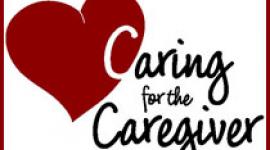Pharmacological Treatment of Mood Disorders
by David M. Goldstein, M.D., Director, Mood Disorders Program, Georgetown University Medical Center
 Effective medical treatments now exist for the full range of mood disorders, from mild depression to severe manic depression. Treatment decisions are based on the severity of the symptoms as well as the type of symptomatology. There are a wide variety of treatments that are now available, but research studies consistently demonstrate that combined psychotherapy and medication treatments produce the best results. The psychotherapy treatments work by helping with the psychosocial and interpersonal adjustment of the individual, whereas the drugs help with the physical and physiologically based symptoms. Psychotherapy seems to help by improving the patient's willingness to continue with the medication treatment, also.
Effective medical treatments now exist for the full range of mood disorders, from mild depression to severe manic depression. Treatment decisions are based on the severity of the symptoms as well as the type of symptomatology. There are a wide variety of treatments that are now available, but research studies consistently demonstrate that combined psychotherapy and medication treatments produce the best results. The psychotherapy treatments work by helping with the psychosocial and interpersonal adjustment of the individual, whereas the drugs help with the physical and physiologically based symptoms. Psychotherapy seems to help by improving the patient's willingness to continue with the medication treatment, also.
This review will focus on psychopharmacological treatments for depression and manic depression. Although the mode of action of the various psychotropic medications is not precisely known, it is thought that these drugs work by correcting imbalances in the brain's chemical messenger or neurotransmitter system. The brain is a highly complex organ, and it may be that the medications work to restore normal regulatory processes in the brain. These drugs are quite effective if taken for sufficient lengths of time and at proper dosages. It is common for there to be a several week delay in the onset of effectiveness of the medication, so patience and cooperation with the prescribing physician are crucial elements in treatment. A primary cause of patients' noncompliance with medication treatment is the emergence of side effects. The side effects associated with the use of these medications generally are dependent upon dosage and duration of treatment. A close cooperative and trusting relationship with the physician is important in helping the individual to navigate through the side effects, should they occur.
These medications have been carefully studied and have to pass rigorous standards by the Food and Drug Administration in order to be released into the marketplace. All available antidepressant prescription medications have been found to be safe and effective and they are not known to be addictive.
Medication choice is guided by diagnosis, so prior to the initiation of treatment, care must be taken to accurately diagnose the medical condition that best explains the presenting symptoms. Treatments for depression and manic depression often differ and this is an important distinction. Manic depressive patients treated with antidepressants alone may be at an increased risk for the development of a manic episode.
Medication Treatments for Depression
There are over thirty antidepressant medications now available in the United States to treat depression. There are three principal neurotransmitters that are involved in the development of depression, and they are serotonin, norepinephrine, and dopamine. The available anti-depressant medications differ in which of these neurotransmitters are affected. The medications also differ in which side-effects they are likely to induce. Other differences among the medications involve how they interact with other medications that an individual might be taking. The available medications for depression can be categorized in the following way:
- Heterocyclic antidepressants
- monoamine oxidase inhibitors
- selective serotonin reuptake inhibitors (SSRI's).
Heterocylic antidepressants: The Heterocyclic antidepressants were the mainstay of antidepressant treatment from their inception in the United States in the late 1950's until the mid 1980's. These drugs include the tricyclic antidepressants, such as Elavil, Tofranil, Pamelor, Norpramin, and Vivactil. These medications have been quite effective in improving the symptoms of depression, but their usefulness is limited by the associated side-effects. These side-effects include dry mouth, constipation, weight gain, urinary hesitancy, rapid heartbeat, and dizziness upon arising. These side-effects, although they are rarely dangerous, may be of significant magnitude to warrant stopping that medication and switching to another. A more recent member of the Heterocyclic family is a new medication named Remeron. This is a recently released antidepressant that is chemically similar to the older compounds, although it has a more favorable side-effect profile.
The monoamine oxidase inhibitor antidepressants (MAO inhibitors): The monoamine oxidase inhibitor antidepressants, or MAOI's, are a group of antidepressants that were developed in the 1950's also. Initially they were used as treatments for tuberculosis, but were discovered to have antidepressant properties among that population. These medications can be highly effective for some individuals who have what is referred to as "atypical depression". These are patients who have a dominance of fatigue, excessive need for sleep, weight gain, and rejection sensitivity. Some investigators feel that this group of patients respond preferentially to MAOI drugs. This category of medications includes drugs such as Nardil and Parnate. There is another medication called Mannerix that is a useful drug in this category but is not commercially available in the United States. Monoamine oxidase inhibitor drugs are limited by the possibility of the infrequent but at times life threatening side effect of hypertensive crisis. This is a phenomenon where, while taking the medication, the individual eats certain foodstuffs or takes certain medications that contain an amino acid known as tyramine. This results in a sudden and severe rise in blood pressure associated with a severe headache. In some instances the use of this medication can be extremely helpful, but the dietary restrictions have to be followed faithfully.
The selective serotonin reuptake inhibitors (SSRIs) The final category of antidepressant medication is known as the selective serotonin reuptake inhibitors, or SSRI drugs. The first of these agents was Prozac, which came on the market in 1987, and was followed in short order by Zoloft, Paxil, Luvox, and more recently by Effexor and Serzone. Another medication related to this group is Wellbutrin. This group of medications has been shown to be equally effective in treating depression as compared to the older Heterocyclic and MAOI medications. The advantage of these drugs is that they have fewer and more benign side effects. Generally speaking, they have fewer cardiovascular side effects and present fewer problem to the patients or the physician. They are not without side effects, however, and some patients report symptoms such as nausea, sexual inhibition, insomnia, weight gain, and daytime sedation.
Results of treatment: Approximately 60-70% of patients who present with symptoms of depression will be successfully treated by the first antidepressant that they take. The remaining 30% of individuals may be helped by trying a second, third, or even fourth medication. In certain instances, the physician may enhance the effectiveness of a particular drug by adding on other agents, such as lithium, thyroid supplementation, or a second antidepressant concurrent with the initial medication. There are difficulties that may develop with loss of efficacy of antidepressants, also. In approximately 20% of cases, individual antidepressants seem to lose their efficacy. When this happens, the physician may change medication or try one of the enhancement strategies suggested above.
Medication Treatment for Manic Depressive Illness
Lithium: The first treatment developed for manic depressive illness was lithium carbonate. Lithium is a naturally occurring mineral that was known in the 19th century to have positive effects on mood. In the late 1940's it was evaluated by a psychiatrist in Australia and found to have beneficial effects in manic depressive illness. This research was followed up in the 1950's by Dr. Morgens Schou in Scandinavia. Since that time, lithium has been the mainstay of treatment for manic depressive illness, being effective for both the manic as well as the depressed phases of that illness. Lithium may be taken alone or in conjunction with other medications, depending on the circumstances. Side effects of lithium treatment include weight gain, memory impairment, tremor, acne, and occasionally thyroid disfunction. During treatment with lithium, which is usually over an extended period of time, that patient should be monitored for thyroid function as well as kidney function.
Valproic acid (Depakote): In addition to lithium, there are a number of other agents available for treatment of manic depressive illness. Valproic acid is available in the United States and was approved for treatment of manic depression this past year. Valproic acid is commonly prescribed as Depakote, and is an effective agent for mood stabilization. Current research studies are underway to compare the efficacy of Depakote as compared to lithium. Side effects associated with Depakote include nausea, weight gain, hair loss, and increased bruising.
Carbamazepine (Tegretol): A third commonly used mood stabilizer is Tegretol. This is a medication that was initially developed for facial pain and subsequently found to be useful for certain types of epilepsy. In the past twenty years it has been developed as a mood stabilizer, and it has been found to have anti-manic, antidepressant, and prophylactic efficacy. Tegretol is associated with a relatively low incidence of weight gain, memory loss, and nausea. Skin rash is sometimes found with Tegretol, and there is the possibility of bone marrow suppression, which requires monitoring by blood tests.
New medications: There have been several new medications that are under development for the treatment of manic depressive illness and show some promise. Neurontin, or Gabapentin is an anticonvulsant compound which is being developed as a mood stabilizer. It shows promise and has the benefit of very few interactions with other medications. Another medication under development is Lamictal. This medication is an anticonvulsant, approved in the United States as an anticonvulsant several years ago. It has been found to have antidepressant properties, and may turn out to have mood stabilizing effects as well, although this is currently under investigation. Lamictal carries the risk of rash with it, which at times may be severe.
Antipsyschotic Medications
The final class of medications is the antipsychotic category. This group of medications has usefulness in more severe states of depression and manic depression. This group of medications is very effective in controlling severe agitation, disorganization, as well as psychotic symptoms which sometimes accompany the more severe instances of mood disorders.
Typical antipsychotic medications: The Typical antipsychotic medications include drugs such as Haldol, Trilafon, Stelazine, and Mellaril. They are quite effective in controlling agitation as well as hallucinations and unrealistic thoughts. They are less effective in controlling or treating the apathy, withdrawal, and indifference that sometimes occurs in these conditions. ( Individuals with mood disorders may have an increased potential for developing neurological side effects associated with the use of these medications, specifically a condition referred to as Tardive Dyskinesia. This is a persistent twitching of the fingers or lips. )
Atypical antipsychotic medications: In recent years, a new class of antipsychotics has become available referred to as the "Atypical antipsychotic medications". This includes Clozaril, Zyprexa, and Risperdal. This group of medications represents an advance over the older medications in that they continue to be effective against psychotic symptoms such as agitation and hallucinations, but they are also helpful in treating apathy and indifference which may also occur. These medications seem to have a significantly reduced likelihood of development of neurological side effects as well.
Continuation or Discontinuation of Medications
Depression and manic depression tend to be recurrent problems, and often maintenance medication is recommended. This recommendation should be discussed carefully between the patient and his or her physician.
A final issue in the use of the psychotropic medications is the issue of discontinuation. The timing of discontinuation of psychotropic medications is an important and highly individual decision, which should always be made in conjunction with one's physician. As a general rule, stopping medications in a gradual way is preferable to abrupt discontinuation. Abrupt discontinuation may result in return of original symptoms, or may result in what is referred to as "discontinuation syndrome". Discontinuation syndrome has a variable presentation. Patients often will feel as if they have a severe case of the flu. Abrupt discontinuation of lithium in the context of manic depressive illness carries the risk of a sudden return of manic or depressive symptomatology. In addition, there is a small group of manic depressive patients who, once they discontinue lithium, become refractory to its effectiveness at a later time.
These medications can be highly effective and may significantly alter the course of an individual's life. One must always keep in mind that the choice to take the medication is based on an assessment of the risks and benefits associated with taking medication as well as not taking the medication. Those choices should always be undertaken in the context of an ongoing relationship with the prescribing physician.
For more information contact the
Depression and Related Affective Disorders Association (DRADA)
Meyer 3-181, 600 North Wolfe Street
Baltimore, MD 21287-7381
Phone: (410) 955.4647 - Baltimore, MD or (202) 955.5800 - Washington, D.C.
Source: National Institute of Mental Health
next: Mental Health Providers: Making the Right Choice
~ bipolar disorder library
~ all bipolar disorder articles
APA Reference
Staff, H.
(2008, November 2). Pharmacological Treatment of Mood Disorders, HealthyPlace. Retrieved
on 2025, December 3 from https://www.healthyplace.com/bipolar-disorder/articles/pharmacological-treatment-of-mood-disorders



